

How Kellogg's Went From Corn To Multinational Food Manufacturer
Table of contents.
Like most specialty foods, breakfast cereal is the result of a kitchen accident rather than deliberate planning. The brothers, who worked as a superintendent and a bookkeeper at a local sanitarium, were experimenting with various diets and accidentally discovered the process for making delicious and crunchy cereal.
After several name changes, the company that eventually became the Kellogg Company has grown into a multinational organization selling its breakfast treats in 180 countries. Over the decades, both the ingredients and the recipe have changed significantly: Originally intended as diet food, and later with large amounts of sugar added, the company has now refocused on healthy eating.
In this article, we take a look beyond the controversial founders to learn how a small cereal company became a Fortune 500 corporation and what its business looks like today.
A few key facts about Kellogg's:
- The Kellogg Company was founded in 1906.
- Kellogg's employs 31,000 people around the world.
- Kellogg's reported $13.77 billion net sales for 2020 .
- The gross profit in 2020 was 3% of net sales .
- In 2020, the company spent $780 million on marketing .
- Kellogg's is marketed in 180 countries around the world .
- The company sells 54 different products .
- The Kellogg Company spends less than 1% of its revenue on Research and Development .
{{cta('eed3a6a3-0c12-4c96-9964-ac5329a94a27')}}
The Story Of The Kellogg Company
Two brothers, a sanitarium, and a kitchen accident.
The Seventh-day Adventists are a church group founded in the 1860s that preaches strict vegetarianism (and a ban on alcohol, tobacco, and other drugs). The Kellogg brothers, Will Keith Kellogg and John Harvey Kellogg were among the church's most ardent followers and made every effort to live a lifestyle consistent with religious observances. The meat was not part of their diet, so they tried to spice up their otherwise rather monotonous meals with a variety of grains. The monotony stemmed not from the ban on meat, but from the fact that John Harvey liked a hard meal and, along with Seventh-day Adventists, was a staunch follower of Sylvester Graham, the inventor of graham crackers and graham flour. He held that salt, sugar, and various spices should be avoided, in addition to meat, because they cause undesirable passions in the human body.
The Kellogg brothers ran a large and popular resort sanatorium in Battle Creek, Michigan, where patients were required to follow a strict diet in addition to regular enemas and exercise. According to some contemporary accounts, the spa was a transition between a luxury hotel and a military training camp. Methods included ice-cold showers, frequent enemas, and the use of bizarre devices of the spa's own design.
But the severity with which he treated his patients did not stop celebrities of the time from turning to Kellogg for their health. Female aviation legend Amelia Earhart and Hungarian-born Olympian Johnny Weissmuller, who played the first Tarzan, were among the patients who had access to Kellogg's sanatorium, and automobile magnate Henry Ford also willingly submitted to the doctor's will. It was here that cornflakes were born - initially from wheat.
The idea for cereal did not come first from Kellogg's. The idea came from Dr. James Caleb Jackson, who made the first dry granola in 1863, which he called "granola." It was not particularly successful until the Kellogg Company finally made the real breakthrough with sweetened cereals.
The Kelloggs found the recipe for success by accident: they had accidentally left a batch of grain in the soaker, but, short of cash, decided to use the shaken-up raw material. The wet grains were then pressed together to produce the distinctive flakes, which were initially offered to "invalids with digestive problems", constipation or other problems resulting from overly fatty, salty, or spicy American cuisine, and excessive caffeine and alcohol consumption.
How Will took over the family business
Will also realized he could make better quality by using much tastier corn instead of less exciting-tasting grains, and with his excellent business sense, he realized the market was not just people with stomach problems, but almost anyone who wanted a quick and convenient nutritious breakfast.
As soon as guests left the sanitarium, hundreds of mail-order requests from them were made for flaked wheat. Will was forbidden by Dr. John Harvey to distribute cereal beyond the boundaries of his consumers. Consequently, the brothers fell out, and Will founded Battle Creek Toasted Corn Flake Company on February 19, 1906. He persuaded his brother to give him the rights to the product, which was then developed and produced by his company, and renamed the Kellogg Toasted Corn Flake Company in 1909, later becoming the Kellogg Company in 1922.
Turning the company into a responsible organization
"I'll invest in people," Will declared as the United States plunged into the Depression in 1930. The company split shifts and hired new workers. He also established his own foundation (named after him), which still exists today, to give poor children a start in life. For further commitment to people, Kellogg began displaying cereals' nutritional information on their boxes, so customers knew exactly what they were eating.
The company’s engineers helped manufacture supplies in Kellogg's machine shops during World War II and produced K-rations for the US military overseas. Introducing Kellogg's Raisin Bran helped the company bring new whole-grain cereal to life, helping America get more nutrition.
In 1969, while Neil Armstrong, Buzz Aldrin, and Michael Collins were on the Apollo 11 mission to the moon, the Kellogg Company provided breakfast for them.
From the late 60s, the company invested more (but as later turned out, not enough) in marketing and expanded its advertising activities to television. This has been one of the busiest periods of the company’s history with events including:
- Sunday morning TV shows used the slogan "Kellogg's puts more into your day" from 1969 to 1970.
- As of 1977, Kellogg's had acquired Salada Foods, Fearn International, Mrs. Smith's Pies, Eggo, and Pure Packed Foods, among others. The company was later criticized for not diversifying further as its competitors did at that time.
Kellogg's market share in the US dropped to 36.7% in 1983 after it underspent on marketing and product development. Wall Street analysts called it "a fine company that's past its prime".
The overall market reception encouraged Kellogg chairman William LaMothe to improve, which primarily involved marketing cereals to the 80 million baby boomers rather than children. As a result of emphasizing cereal's convenience and nutritional value, Kellogg's helped increase cereal consumption among US consumers aged 25 to 49 by 26% over the last five years.
In 1983, the US ready-to-eat cereal market was worth $3.7 billion, but by 1988, it had grown to $5.4 billion and had expanded three times as fast as average grocery categories. In addition to Crispix, Raisin Squares, and Nutri-Grain Biscuits, Kellogg's introduced Just Right for Australians and Genmai Flakes for Japanese consumers. The company, which marketed largely children's cereals, maintained a competitive edge over its top competitors: General Mills and Post, which faced challenges in the adult cereal market.
Preparing for the future with acquisitions
Kellogg's bought Keebler in 2001 for $3.87 billion, while also cutting 470 jobs at the same time. The company has also acquired Morningstar Farms and Kashi over the years. In addition, the company owns Bear Naked, Natural Touch, Cheez-It, Murray, Austin cookies and crackers, Famous Amos, Gardenburger (acquired in 2007), and Plantation brands.
As part of a cash transaction, Kellogg's acquired Pringles from Procter & Gamble in 2012 for $2.7 billion , becoming the world's second-largest snack food company (after PepsiCo). 5 years later, Rxbar, a simple food company in Chicago, was acquired for $654 million .

Ferrero SpA announced on April 1, 2019, that they would be acquiring Famous Amos, Murray's, Keebler, Mother's, and Little Brownie Bakers from Kellogg’s. The acquisition deal was completed later that year. The Kellogg Company kept the Keebler cracker line but brought it under the Kellogg's brand umbrella.
Key takeaways
The Kellogg brothers were unable to settle their cornflakes dispute until their deaths, and their relationship was forever damaged after they started their own company. But this personal tragedy does not diminish their joint achievement of inventing one of the world's most famous and beloved foods.
From the company's history, it's clear that Will, a skilled accountant, quickly understood what they needed. Kellogg's needed to capture more and more markets. After focusing on specific regions, the company moved on to targeted market segmentation - primarily targeting children and their parents with its products.
Kellogg’s Brands And Flagship Products
Who owns the company today.
Today, Kellogg’s is among the largest food manufacturing and grocery holdings companies traded on the stock exchange. The major shareholders of the company are the following, according to Market Screener .
Kellogg’s brands
The world's largest food and beverage brands are controlled by about ten companies. These companies are:
- General Mills
- Associated British Foods
And, of course, Kellogg’s .
The Company’s brands include Kellogg’s, Keebler, Pop-Tarts, Eggo, Cheez-It, All-Bran, Mini-Wheats, Nutri-Grain, Rice Krispies, Special K, Chips Deluxe, Famous Amos, Sandies, Austin, Club, Murray, Kashi, Bear Naked, Morningstar Farms, Gardenburger and Stretch Island.
Kellogg’s flagship products

According to a study by IRI Worldwide in 2017, Kellogg’s had a share of 30.01% in the US breakfast cereals market. This was because the company produced 4 out of the 10 favorite bowls of cereal:
- Raisin Bran
- Frosted Mini Wheats
- Fruit Loops
- Frosted Flakes
Sunshine Biscuits
The American Biscuit & Manufacturing Company was founded in 1890 by 33 Midwest and western bakers. The goal of consolidation, i.e., the merger of small, local companies, was to oust the two largest U.S. companies from the top of the market. The American Biscuit and New York Biscuit groups tried to eliminate the competition by opening bakeries in each other's areas and lowering prices. The National Biscuit Company (Nabisco) was formed by combining 114 factories in February 1898.
As a member of Nabisco's Board of Directors, Joseph Loose created the Loose-Wiles Biscuit Company in Kansas City in 1902, along with his brother Jacob and John H. Wiles. They imagined a factory that was filled with sunlight, so they called their products SUNSHINE. The company began expanding, opening plants in Boston and then New York.
It took Loose-Wiles forty years to dissuade other companies from using the term "sunshine" or any related term in products or advertising because it did not register its brand name. Sunshine Biscuit, Inc. finally became the official name of the Loose-Wiles Company in 1946.
The company developed new products and acquired established brands from smaller competitors in the early part of its history. There are many products and their names that resemble those of their biggest competitor, the National Biscuit Company.
The company was purchased by the American Tobacco Company in 1966. Following the sale to GF Industries, a privately held California company, the company merged with Keebler in 1996. In 2001, it joined Kellogg's group, already part of Keebler.
Cheez-It snack crackers, as well as Krispy Crackers saltines, are Sunshine's best-known products.
Frank Dorsa developed a process for cooking, freezing, and packaging waffles in San Jose, California. In 1953, similar to Kellogg’s, the Dorsa family came up with Eggo frozen waffles as "Froffles" (putting together the words "frozen" and "waffle"). A waffle iron was not necessary to prepare frozen waffles, which immediately made the product unique to the market.
Customers called them Eggos because of the egg flavor. As more and more people started calling their frozen waffle products Eggos, the owning family realized it was worth taking the opportunity to rename the company.
Eggo potato chips (and Golden Bear potato chips) and Eggo syrup were also produced by the Dorsa brothers, in addition to frozen waffles. In San Jose, CA, a sprawling plant and factory on Eggo Way produced all of the products. As active members of their local community, the Dorsas donated a great deal to local schools and community projects.
Kellogg Company acquired Eggo in 1968 as a means of diversifying. Through their television commercials, their advertising slogan "L'eggo my Eggo" was developed in 1972.
The Eggo brand of breakfast cereals is shaped like waffles and is produced by Kellogg's. It comes in flavors such as maple syrup and cinnamon toast. Originally produced from 2006 to 2012, the brand was reintroduced in 2019 following a successful campaign.

Fredric J. Baur (1918-2008) was tasked by Procter & Gamble in 1956 with creating a new kind of potato chip in response to consumer complaints about broken, greasy, and stale chips, as well as air in the bags. A canister was selected as the container for the saddle-shaped chips that Baur created from fried dough for two years. Pringles chips have a saddle shape known as a hyperbolic paraboloid.
Baur's work was restarted by P&G researchers in the mid-1960s, and they succeeded in improving the taste. The patent name on the Pringles chip is Liepa's, not Baur's, even though Baur designed the chip's shape. The machine that cooks them was developed by Gene Wolfe, an author and mechanical engineer. Pringles were first sold in Indiana in 1968 by P&G. Throughout most of the US, they were available by 1975, and internationally by 1991.
The product was originally called crisps, but due to a competitor's veto, the product was eventually required to include the words crisps made from dried potatoes. However, for understandable reasons, the company could not easily use this name in its advertising, so it was changed to "crisps".
The deal would have more than tripled the size of Diamond Foods' snack business if it were to sell the brand to P&G in April 2011. After a year-long delay, Diamond's accounts caused the deal to collapse in February 2012. As part of its strategy to grow its international snack business, The Kellogg Company acquired Pringles for $2.695 billion on May 31, 2012. As a result of its acquisition of Pringles, Kellogg became now the world's second-largest snack company.
Pringles has five plants worldwide as of 2015: in the US, in Belgium, in Malaysia, in Poland, and China.
GardenBurger
Paul Wenner developed the Gardenburger at his vegetarian restaurant, The Gardenhouse, in Oregon, around the early 1980s. In March 1985, Wholesome & Hearty Foods, Inc., was incorporated. Paul Wenner and Allyn Smaaland received their first funding as part of a venture capital investment program of Louisiana-Pacific Corp. As a result, L-P took a controlling stake in the company immediately. About a year later, the company received a second round of venture capital financing. Despite filing for bankruptcy in 2005, Gardenburger continued to operate by becoming privately owned.
It announced in 2006 that it would remove eggs from all of its products, except for one item sourced privately, which now contains organic, cage-free eggs. In 2006, the company renamed itself Wholesome & Hearty Foods. A year later, Kellogg’s acquired the company to broaden and diversify its portfolio.
The Kellogg's Company has been very involved in product development since its founding. Without it, the breakfast cereal market would not exist - although it should be added that countless studies have shown that these products have contributed greatly to the morbid obesity of American children. However, the company's strategy was clear: drive product development through the creation of new brands and acquisitions.
Today, Kellogg's has developed a complex portfolio of products and brands that includes all types of breakfast and snack foods - from frozen waffles to hamburgers.
The most famous of the acquired brands are undoubtedly Pringles, which reformed the potato chip market with its distinctive shape and flavor. In almost a decade, the group has become one of the strongest brands in the industry.
The Outline Of The Company’s Strategy
The kellogg’s better days program.
Kellogg's Better Days , Kellogg's signature purpose platform, has provided 3 billion servings of food to people in need since 2013. As part of Kellogg's commitment to increase ambition in 2019, the company captured a wider range of goals and aligned with the United Nations Sustainable Development Goals.
Kellogg will address food security and create Better Days for 3 billion people by 2030 through its updated program goals. To drive positive change for people, communities, and the planet, the company focuses on wellbeing, hunger relief, and climate resilience. Kellogg's specifically supports:
- Delivering nutrients of need to 1 billion people while addressing hidden hunger.
- Providing food donations and expanded child-feeding programs to 375 million people in need.
- Achieving science-based targets, sourcing ingredients responsibly, reducing organic waste, and providing sustainable packaging while supporting 1 million farmers and workers across the value chain.
- Advancing the values of the founder by advocating for children facing hunger, encouraging employee volunteering, ensuring an ethical supply chain, and supporting diversity and inclusion.
Raw materials
As a result of the COVID-19 pandemic, food companies have run into serious difficulties as labor shortages have led to sharp price fluctuations in the commodity market. Kellogg's normally sources its raw materials from local growers but says it is increasingly reliant on imports. To compensate, Kellogg's is gradually extending contracts with its suppliers, tying up capacity in advance to ensure predictability and planning.
The trend in the international market is that the strong fluctuations in raw material prices mainly affect the US market, so Kellogg's other factories can continue to operate smoothly.
Research and Development
At the WK Kellogg Institute for Food and Nutrition Research in Battle Creek, Michigan, and other locations around the world, researchers support and expand the use of existing products and develop new products. Despite having a dedicated research institute dedicated to food quality, safety, and new product development, the company spends surprisingly little: 2020-$135; 2019-$144; 2018-$154.
Food scientists at Kellogg's world-class research facility develop innovative breakfast foods that meet consumers' expectations for taste, nutrition, and convenience.
Nine conference rooms, a boardroom, a 120-seat auditorium, a 3-story atrium, a stainless steel staircase, and state-of-the-art technology are all included in the new building. As a result, the WK Kellogg Institute consolidates the Company's global food research efforts in one location. This enables Kellogg researchers and technical experts to better share knowledge while enabling new products to be introduced to consumers more quickly.
Equity and diversity within human resources
Kellogg established a separate, independent Diversity & Inclusion Office in 2005. A major focus of this internal organization has been to recruit and retain a diverse workforce, create awareness about diversity issues, foster a supportive, inclusive work environment, and embed accountability for diversity across all lines of business. The company strives to reflect the diversity of its consumers. ED&I (Equity, Diversity, and Inclusion) is reported directly to the Board of Directors periodically.
This organization is divided into 8 different Business Employee Resource Groups:
- KVets and Supporters
- Kellogg Multinational Employee Resource Group
- Kellogg’s Young Professionals
- Kellogg African American Resource Group
- Women of Kellogg
- Hola (Latino resource group)
- KPride & Allies (LBGTQ+ resource group)
- Kapable (support group for people with disabilities).
Risk assessment with a COVID-19 focus
Kellogg's is being unusually open about the risks that management sees in COVID-19 and the economic difficulties that have followed in its wake, mainly, of course, under pressure from and for the information of its shareholders.
In its annual report, the company cites the negative impact of COVID -19 on the supply chain as the biggest risk. Forced shutdowns due to regulatory quarantine and illnesses within the company (including Kellogg Company subcontractors) make it very difficult to meet order backlog. This applies primarily to the US but could affect any other country if the outbreak worsens.
A decline in national and global economic conditions, as well as volatility in financial markets, could have a variety of effects on the business and operations, including the following:
- In economic downturns, consumers may opt for cheaper or more generic offerings or may forego certain purchases altogether, which could result in lower sales revenue or a shift in product mix to lower profit offerings, adversely affecting business results.
- As a result of disruptions or uncertainties related to the COVID-19 pandemic, Kellogg’s could be hindered in efforts to reduce operating costs, both in the supply chain and in overhead, and the ability to implement strategic plans and initiatives.
- Currency translation losses and currency transaction losses would result if the US dollar strengthened relative to foreign currencies in the countries where the company operates.
- As a result of illness or government restrictions, a considerable portion of the workforce may not be able to work.
- Because many of Kellogg's employees work remotely, Kellogg's is increasingly susceptible to cyberattacks due to its reliance on information technology systems.
- Due to illness, government restrictions, or other workforce disruptions, a manufacturing, warehousing, or distribution facility may close down, or the supply chain may be disrupted.
- As a result of reduced in-store visits and travel restrictions, it's difficult to modify trade promotion and advertising activities effectively.
- During the COVID-19 pandemic, unemployment may lead to a decrease in demand for products.
- A significant increase in commodity and other input prices could have a substantial impact on the results of operations.
- Volatility in equity markets or interest rates can significantly affect the cost of pensions and the required contribution.
Numerous measures have been taken by the Company to help fulfill key objectives and reduce industry-related risks during the pandemic:
- Keeping employees healthy and safe.
- Produce and deliver food safely to consumers and customers.
- Kellogg's supports the communities in which it operates.
- Flexibility in financial matters.
- This process involved close collaboration with medical, regulatory, and other experts.
Among the above measures, maintaining financial flexibility is discussed most openly. According to Kellogg’s, operating activities are expected to generate $1.6 billion in cash for the company in 2021, while capital expenditures will be about $500 million. Additionally, it has access to commercial paper markets and currently has revolving credit agreements totaling $2.9 billion, including $1.5 billion effective through 2023 and $1 billion through 2022.
The Kellogg Company’s operating strategy is multi-faceted and highly diversified. The Better Days program and internal strategy HR demonstrate that the company is socially responsible, to provide food to as many underdeveloped, poor regions as possible and strengthen the equity and inclusion of external and internal human resources (employees and contractors).
At the same time, another important element of the operational strategy is to ensure the stability of the company during the pandemic COVID-19. This involves ensuring that the huge demand for raw materials can be met (especially in the U.S., where shutdowns are most difficult) and providing financial stability, for which Kellogg's considerable liquidity is a great help.
But it is also surprising how little one of the world's largest food conglomerates spends on food safety and innovation. This is especially true given the pressure on the company to produce ever healthier, sugar-free products that are more beneficial to children's development - but so far this is happening more at the level of communication.
Production, Sales, and Marketing
Manufacturing breakfast.
Three nutrients - nitrogen, phosphorus and potassium - are injected into the soil in April to help the seeds grow. Two months later, the corn undergoes a growth spurt, reaching five feet tall and blooming. It is time to harvest the corn between October and November, when it is ready for sifting, cleaning, and rolling at a mill, before it is shipped to Kellogg's. Flakes are formed from corn grits in the factory. Kellogg's Corn Flakes are cooked, dried, and toasted to create these flakes, which are then sold at supermarkets.
As a traditional FMCG company, Kellogg's does not sell directly to customers but is associated with small and large grocery chains such as Walmart and Tesco. About 20% of the group's employees are in sales, mainly account managers who sell products to store networks and make sure they are positioned correctly.
There is also a dedicated team for what is known as sampling, which overlaps with sales and marketing. This involves giving customers the opportunity to try the latest products in a country-specific, localized way. With a category like cereal, the company needs to create multiple touchpoints so consumers can experience the products. Sampling, along with the right pricing architecture, helps achieve this. In this series of innovations launched over the past few years, sampling and other promotional activities have taken center stage as they help consumers experience a product firsthand before they develop an affinity for it.
Kellogg's has focused on its core target group of children - or more specifically, families with children - almost from the beginning. This is a special market segment, because you have to both persuade and engage kids (if they do not like the product, parents will buy it for free) and send the right messages to parents. The company realized early on that the packaging of the products plays an important role in this, and continues to do so today.
_(8212202202).jpg)
To meet parents' expectations, the health benefits of healthy foods must be emphasized in advertising, on packaging, and on all company communication platforms.
Kellygg's invests more than 8% of its sales in brand building , which helps the company build a strong brand in the developing world. One of the current focus areas of the company is India. According to Bakery and Snacks , the 2019 brand value of Kellogg’s was $6.7 billion - the fourth largest globally.
Kellogg's marketing campaigns have changed significantly over the years. With a marketing budget slightly below the market average, the company typically thinks about more thoughtful campaigns. Before the 2000s, it was more typical to sponsor sporting events, advertise on TV (the best time to do this was before children's shows on weekends), but they also provided the fake money for the moon landing.
In developed countries, marketing spend is increasingly shifting to the Internet (the company has over 1 million followers on Facebook in the US alone), but in developing countries, print media and television remain the most effective channels. For the poorest regions of the developing world, not only is information an important goal, but Kellogg's must also educate the market. In India, for example, a significant proportion of children do not eat breakfast at all, so Kellogg's is also raising awareness in its local campaigns.
The Kellogg's group of companies is a traditional FMCG company, meaning that it does not sell its products directly to the consumer, but involves various distributors in the process. These are smaller, local grocery stores, which are visited individually by sales representatives, and large chains and supermarkets, which are in turn contacted by central customer service representatives.
For one of the world's best-known food brands, Kellogg's spends very little on brand building and marketing activities. Much of that spending goes to developing countries, where breakfast and fake foods are not as fashionable as they are in the U.S., for example. Kellogg's is trying to market itself through education.
Final Thoughts And Key Takeaways
Growth by numbers.
Kellogg Company Group sales clearly peaked in the past decade in 2014, followed by a sharp decline and another gradual increase. However, the coronavirus outbreak changed all scenarios - providing an unexpected surge in cereal purchases (only to later lose momentum due to supply chain disruption).
One of the big challenges for Kellogg Company is the growing competition in the market, fueled not only by cereals but also by breakfast offerings from fast-food chains. However, the company does not yet have an overarching global strategy that could differentiate it from the rest of the market.
Key takeaways from Kellogg’s story:
- Responsible recipes: Kellogg's focused on responsible practices relatively early on, which remains an important communication point today. However, values such as producing healthy food, promoting the trace elements necessary for children's development, and educating people about the importance of breakfast are not just marketing concepts; they play a major role in convincing families with children to buy the products in the long term.
- Building complementary brands: The company has slowly but steadily developed its numerous sub-brands. These were later complemented by acquisitions of companies already established in the market. The underlying strategy was to be present in the breakfast meal and snack market with all significant product lines.
- Taking responsibility within the company: Diversity and inclusion are not just buzzwords, they also help Kellogg to remain a world-leading group and provide opportunities for talent to flourish, regardless of background. It has also launched a special program to feed and educate people in poor regions.
- Brand building at low cost: One of the Kellogg Group's greatest advantages is that the product line it invented is still identified with the company, giving it an advantage in competing for customers even after 100 years. For this reason, brand building is primarily focused on global regions such as certain Asian countries where there is still room for market growth.
But competitors are on a more spectacular trajectory - both Nestlé and Danone are developing much broader product portfolios, giving them the opportunity to capture a larger segment of the food market. Kellogg's is still the market leader in breakfast cereals, but if the company does not increase its pace of innovation, spend more on marketing and overcome the risks associated with the global shortage of raw materials, it could lose its leadership position.
- Business Cycle
- Business Environment
- Consumer Protection
- Corporate Responsibility
- External Influences
- Globalisation
- Government Influence
- International Business
- Financial Risk
- Investment Appraisal
- Sources of Finance
- Competitive Advantage
- Customer Focus
- International Marketing
- Market Research
- Marketing Planning
- Marketing Strategies
- Product Launch
- Product Life Cycle
- Product Portfolio
- Segmentation
- The Marketing Mix
- Continuous Improvement
- Customer Service
- Health and Safety
- Lean Production
- Location of Business
- Management of Change
- Merger and Acquisition
- New Product Development
- New Technology
- Product Development
- Production Process
- Research and Development
- Supply Chain
- Communications
- Developing People
- Equal Opportunities
- Managing Change
- Organising People
- Protecting People
- Recruitment and Selection
- Roles and Responsibilities
- Skills and Competencies
- Aims and Objectives
- Business Expansion
- Business Organisation
- Business Planning
- Business Start-Up
- Business Strategy
- Decision Making
- Sectors of Industry
- Stakeholders
- Strategic Planning
- Types of Organisation
- External environment
- External Environment
- eBook Collections
- Audio Case Studies
- Printed Books By Edition
- Employee Retention
- HR Software
- Hybrid Working
- Managing People
- Motivating People
- Performance Management
- Recruitment
- Time Management
- Training and Development
- Business Aquisition
- Business Growth
- Business Plan
- Business Startup
- Entrepreneurship
- Small Business
- Strategic management
- Types of Business
- Accountants
- Bookkeeping
- Budgeting and Cash Flow
- Business Debt
- Business Financing
- Business Funding
- Business Insurance
- Business Investment
- Business Loans
- Business Payments
- Business Taxation
- Market Trading
- Advertising
- Affiliate Marketing
- Business Branding
- Business Events
- Content Marketing
- Conversion Rate Optimisation
- Customer Experience
- Digital Marketing
- Email Marketing
- Lead Generation
- Link Building
- Marketing Agencies
- Marketing Strategy
- Pay Per Click Advertising
- Public Relations
- Social Media
- Business Efficiency
- Business Innovation
- Business Location
- Business Management
- Business Security
- Manufacturing
- Outsourcing
- Project Management
- Quality Management
- The Supply Chain
- Business Law
- Coronavirus
- Sustainable Business
- The Economy
- Stakeholder
- Ethical Business
- Business of Gambling
- Casino Bonuses
- Casino Games
- Casino Guides
- Mobile Gambling
- Online Casino
- Sports Betting
- Tips and Tricks
- Online Learning
- Schools and Colleges
- Students and Teachers
- Studying Internationally
- Universities
- Writing Services
- Cosmetic Procedures
- Cannabidiol (CBD)
- Cannabis/Marijuana
- Dental Care
- Mental Health
- Office Wellbeing
- Relationships
- Supplements
- Banking and Savings
- Credit Cards
- Credit Score and Report
- Debt Management
- International Money Transfers
- Investments
- Payday Loans
- Personal Insurance
- Personal Law
- Motor Accidents
- Motor Finance
- Motor Insurance
- Motoring Accessories
- Virtual Reality
- Gaming Accessories
- Mobile Gaming
- Online Gaming
- Video Games
- Buying Selling and Renting Property
- Construction
- Property Cleaning
- Property Investments
- Property Renovation
- Business Travel
- Camping Activities
- Travel Guides
- Travel Safety
- Visas and Citizenship
- Antiques and Art
- TV, Film & Music
- Mobile Apps
- Mobile Phone
- Photography
- Digital Transformation
- Crypto Exchange
- Crypto in Business
- Crypto Mining
- Crypto Regulation
- Crypto Trading
- Accessories
- Artificial Intelligence
- Programming
- Security & Privacy
- Software Development
- Web Analytics
- Website Design
- Website Development
- Website guides
- Website Hosting
- Guest Posting
- Membership Billing
- Membership Cancel
- Membership Invoice
- membership levels
- Your Profile
- Account Details
- Lost Password
No products in the basket.

BATTLE CREEK, MICH. — Forthcoming product launches from Kellogg Co. focus on three key areas, said Nigel Hughes, senior vice president of global research and development.
The first area of innovation taps into consumer desire for simple enjoyment and includes products such as Pringles Scorchin', Homestyle Rice Krispies Treats, Eggo Stuffed Pancake Bites and the return of Smorz cereal.
The second area of innovation, well-being, responds to a significant rise in overall interest in health and wellness, Mr. Hughes said.
“We’re addressing this through zero- or low-sugar variants of our foods across the globe and a range of keto-friendly and plant-based protein foods,” he said during a Feb. 17 presentation at the Consumer Analyst Group of New York virtual conference. “In addition, many consumers are turning their attention to their gut health and the support of their immune system.”
Products include Kashi cereal and Special K snack bars that were developed for the ketogenic diet, as well as Kellogg’s portfolio of ready-to-eat cereals that are high in fiber.
“And then there’s another area that even merits its own mention, our Morningstar Farms range of plant-based foods,” Mr. Hughes said. “Remember, we are extremely well placed for consumers’ move toward plant-based eating because we have an overall portfolio that is 86% pure plant-based. This includes a meat alternative, plant-based protein range in Morningstar Farms and its recently launched subline, Incogmeato.
“In 2021, we will launch innovation across the whole of this range, from Veggie Meatballs and Bites to our new Incogmeato Chik'n Nuggets and Bites.”
Experimentation and quick market feedback are central to Kellogg’s revamped approach to innovation, Mr. Hughes said. Kellogg is testing two ideas in limited markets, including a direct-to-consumer product offering focused on digestive health and a fully recyclable paper Pringles can in a partnership with a retailer in Europe.
“This will give us great firsthand feedback on how to optimize our innovation and create value for our consumers, our customers and us,” Mr. Hughes. “A great example of leveraging sustainability with a learning-by-doing approach.”
Changes to Kellogg’s product development capabilities provide a competitive advantage to keep pace with consumer trends and innovate more quickly. The pandemic accelerated the use and effectiveness of these new capabilities, Mr. Hughes said.
“We've revamped our whole end-to-end innovation capability to focus on our core food design skills: investing in culinary to get closer to the real food experience; sensory, to equitably learn with the consumer; a design studio and rapid process lab to speed up our prototyping; a scaled-up pilot, which is now certified to make salable food; and finally, our Menuvation Center at The Hatchery in Chicago to showcase our foods with partners and customers,” Mr. Hughes said. “These changes give us a real leg up on the competition because they allow us to hit trends, influence new trends and grow our business. They've transformed our ability to innovate.”
Related Articles
Slideshow: inside adm's new innovation center, inside hershey’s c-store strategy, slideshow: inside hershey’s seasonal strategy, related events, the changing rules of dsd in today’s market, cleaner approach to extending shelf life, current issues & directories.

Popular Articles
Quaker closing illinois facility after recall, port of baltimore closed indefinitely after bridge collapse, collapsed bridge shuts down port of baltimore, minnesota bakery accuses sugar producers of price fixing, popular galleries.

Simply Good Foods, Meji granted patents

General Mills, Radie B.V. granted patents
Academia.edu no longer supports Internet Explorer.
To browse Academia.edu and the wider internet faster and more securely, please take a few seconds to upgrade your browser .
Enter the email address you signed up with and we'll email you a reset link.
- We're Hiring!
- Help Center

Kellogg's Using new product development to grow a brand

Related Papers
SIMON SOOREJ
Procedia - Social and Behavioral Sciences
Vazeerjan Begum
Bahaudin Mujtaba , Nile Khanfar
University of the People
Kurniawan Arif Maspul
Zenodo (CERN European Organization for Nuclear Research)
ellyza rachmawati
Journal of Agricultural & Food Industrial Organization
John Connor
Emerald Group Publishing Limited
Vincenzo Basile
Purpose-This paper aims to identify the combination of innovation determinants driving the creation of innovative products amongst market leaders and market followers in food and beverage (F&B) firms. Design/methodology/approach-This research is based on the case study methodology by using two types of data sources: (1) semi-structured interviews with industry experts and (2) in-depth interviews with managers. In addition, a questionnaire adapted from prior research was used to consider market and firm types. Findings-Suggesting an integrated theoretical framework based on firm-based factors and market-based factors, this study identified a combination of determinants significantly impacting innovative products in the market. Specifically, these determinants are competition intensity and innovation capability (a combination of research and development (R&D) investment and marketing capabilities). The study also examined how these determinants vary depending on whether the firms are market leaders or market followers. Practical implications-This research provides practical insights for managers working in the F&B industry by using case studies and exploring the determinants of developing innovative products. In doing so, suitable strategies can be selected according to the market and firm situations. Originality/value-The originality of the study is shown by focussing on how different combinations of market and firm factors could be applied in creating successful innovative products in the food sector.
International Journal of Applied Business and International Management
izzati akhtar
Nestle is a globally recognized brand with a large following of dedicated customers because of its variety of products that captivate everyone who consumes it. This study aims to examine the correlation between customer satisfaction on Nestle’s fame and fortune. Nestle may have issues regarding their customer satisfaction which is affecting the company’s development. Therefore, this case study tries to show and analyze how Nestle meets customer satisfaction while improving its products. A survey has been carried out to obtain new, valid, and accurate data. A total of 100 respondents participated in this survey. Besides, secondary data for this study was acquired from a variety of resources such as websites, journals, and articles in order to gain a deeper understanding. The findings indicate that customer satisfaction influences the fame of Nestle. The findings also provide recommendations to enhance the opportunity of improving Nestle’s customer satisfaction and suggestions for fut...
International Journal of Tourism and Hospitality in Asia Pasific
Noura Almutairi
Rohaizat Baharun
RELATED PAPERS
GSC Advanced Research and Reviews
Kenneth Omokhafe
Human Immunology
Franco Pandolfi
Experimental Cell Research
Ingunn Holen
Journal of clinical microbiology
Albert Lastovica
Jordi Fernandez
9th IFAC Workshop on Time Delay Systems (2010)
Daniel Pachner
Postmodern Openings
tiberiu dughi
Inorganica Chimica Acta
mohammad hakimi
Revista da Sociedade Brasileira de Medicina Tropical
Jose Sousa Parente Filho
Semina: Ciências Agrárias
Ali hosseinkhani
Anales Venezolanos de Nutrición
Betty Méndez
Sarah Elsea
The Astrophysical Journal
Eugenio Coccia
International Journal of Surgery Case Reports
Steven Garcia
e-Revista LOGO
Paula Landim
Nursing reports
Vitor Parola
wiwiek R adawiyah
JCI Insight
Lauren Langford
Proceedings of the 7th World Congress on Genetics …
H. Simianer
La Revue pour l’histoire du CNRS
Alain G A Pavé
Majalah kedokteran Andalas
Cahyono Kaelan
Journal of Engineering Research
Sergio Luiz Garavelli
The Opened Scroll Ministry
RELATED TOPICS
- We're Hiring!
- Help Center
- Find new research papers in:
- Health Sciences
- Earth Sciences
- Cognitive Science
- Mathematics
- Computer Science
- Academia ©2024
To read this content please select one of the options below:
Please note you do not have access to teaching notes, breakfast gone bad … the case of kellogg’s rice krispies ®.
Publication date: 15 November 2019
Teaching notes
Learning outcomes.
After having discussed the case, the reader will be able to analyse the dangers associated with product changes; contrast various strategic marketing issues that can be considered when implementing changes, including marketing communication and the use of social media; motivate an approach to customer complaints and comments on the launch of a new product; and comment on the ethical issues associated with new product launches.
Case overview/synopsis
Marketers are focused on satisfying customers’ needs, and no organisation would deliberately offend or alienate customers. Occasionally, organisations make decisions that anger customers as they do not understand the reasoning behind them. Sometimes, the decision is the correct one and once the company has clarified the reason behind it, the customer adjusts to the new situation. At other times, the consumer refuses to accept the decision and abandons the organisation or the specific product. This situation indicates some important negative outcomes for companies when making changes to product formulas. Social media allows customers to complain and comment, adding visibility to the situation. All these factors contribute to presenting management with a challenge in dealing with this situation, considering the needs of the company and balancing them with the customer reactions.
Complexity academic level
Third-year strategic marketing students MBA students (marketing courses)
Supplementary materials
Teaching notes (and necessary annexures) permissions.
Subject code
CSS 8: Marketing.
- New product development
- Customer relations
- Social media strategy
Acknowledgements
Disclaimer. This case is written solely for educational purposes and is not intended to represent successful or unsuccessful managerial decision-making. The authors may have disguised names; financial and other recognizable information to protect confidentiality.
The suggestions and inputs of Prof Margie Sutherland to the case study is acknowledged.
Berndt, A. (2019), "BREAKFAST GONE BAD … the case of Kellogg’s rice Krispies ® ", , Vol. 9 No. 3. https://doi.org/10.1108/EEMCS-02-2019-0035
Emerald Publishing Limited
Copyright © 2019, Emerald Publishing Limited
You do not currently have access to these teaching notes. Teaching notes are available for teaching faculty at subscribing institutions. Teaching notes accompany case studies with suggested learning objectives, classroom methods and potential assignment questions. They support dynamic classroom discussion to help develop student's analytical skills.
Related articles
We’re listening — tell us what you think, something didn’t work….
Report bugs here
All feedback is valuable
Please share your general feedback
Join us on our journey
Platform update page.
Visit emeraldpublishing.com/platformupdate to discover the latest news and updates
Questions & More Information
Answers to the most commonly asked questions here

Live Virtual Programs
Learn from our esteemed faculty in a rich, interactive digital environment, and equip yourself for a new, dynamic business landscape.
Saved Programs 0

Explore group and custom solutions
Accelerate your growth: build an outcome-based partnership between Kellogg and your organization.

Center for Nonprofit Management
In this era of dramatic social and economic change, nonprofit leaders are being challenged as never before — and the need for leadership development has never been greater.

Gain the Kellogg edge
A distinctive cross-disciplinary approach puts the Kellogg advantage to work for you.
- Executive Programs
- Online Programs
- C-Suite Programs
- Executive Scholar Certificate
- Request A Brochure
- Find a Program
- Our Partnership Philosophy
- Design Process & Team
- Association & Specialty Programs
- Academic Partners
- Group Registrations
- Inquiry Form
- Our approach
- Nonprofit Custom Programs
- Equity Essentials
- Nonprofit Management Essentials
- Join Mailing List
- The Kellogg Advantage
- Our Learning Environment
- Our Faculty
- Thought Leadership
- Participant Perspectives
- Alumni Benefits
- Subscribe to Newsletter
- Executive Education
- Individual Programs

Professional Certificate in Product Management
Advance your career in product management.
Demand for product managers who can align all the stakeholders involved in launching or enhancing a product — while also providing a strategic vision — is high. This program is designed to prepare professionals to build and manage a product roadmap through user research, prototyping and product analysis. Learn the skills that will deliver the most commercial impact for employers.
The Professional Certificate in Product Management provides a launchpad for advancing your career in product management. Participants will develop the essential strategic and tactical skills and capabilities needed for in-demand product management roles in this fast-growing field.
- DOWNLOAD A BROCHURE

Products are the foundation of growth.

Who Should Attend
The Professional Certificate in Product Management is for those who want to build on or formalize their training for product management roles, including:
- Early-career professionals with one to five years of experience as a product manager or in a product support role
- Professionals making a lateral career move from an adjacent field such as engineering, UX/UI, marketing or sales
Participants come from a wide range of industries, including but not limited to:
- Tech companies (software, hardware, electronics, networking, e-commerce)
- Industrial products companies (consumer durables, medical equipment & devices, automotive, construction, agriculture)
- Tech-intensive services firms (banking/fintech, law firms, IT services, consultancies)
Key Benefits
- Master the end-to-end process of discovering, designing, developing, delivering and managing products
- Learn the strategic thinking and tactical implementation skills needed to become a professional product manager
- Gain certifications in product management tools and methodologies including project management, wireframing (Balsamiq) and analytics (Google Analytics).
- Hone your communication, negotiation and influence skills to effectively manage people and relationships
- Apply frameworks and tools to develop a start-to-finish product marketing plan for a product
Program Content
The program consists of 20 modules to make sure you are you are ready to advance your career in product management.
Module 1: Introduction to Product Management
Learn what a product manager (PM) does, and how the role varies across industries, company size and format (B2B and B2C). Learn what you need to succeed in this role and what makes an outstanding product manager. Additionally, understand why products matter; the product vision, mission and strategy; problems versus products; and managing products as a business.
Module 2: Customer Insights for Product Innovation
Learn about the nature, sources, and tools of customer insights (e.g. ethnography, customer experience mapping, customer advisory boards, product telemetry, human factors research, etc.); and move from insights to action.
Module 3: Analyzing Product Opportunities
Learn how to define and find product opportunities, Jobs-to-be-Done (JTBD) Framework and assessing opportunities using the Real/Win/Worth Framework.
Module 4: Product Discovery and Requirements Definition
Learn about creating the Discovery Hypothesis, Product/Market Fit, MVP Framework; user stories, epics and themes; and address the Agile requirements document.
Module 5: Business Model Design
Learn the definition and importance of business models, business model taxonomy — Freemium, SaaS and marketplace models and equip yourself to choose the right business model for your product.
Module 6: Financial Analysis for Product Managers
Understand the economics of a SaaS business (CLV, CAC, MRR, MRR Expansion, Churn), NPV (Net Present Value), IRR (Internal Rate of Return) analysis, Product Profitability Analysis and Product Pricing.
Module 7: UI/UX Design for Product Managers
Learn the fundamentals of UX design, conceptual design, interaction design, virtual design, and the design sprint.
Module 8: Agile Product Development
Explore the principles of Agile development, Agile methodologies (Scrum, Kanban, etc.), principles of Scrum/Agile team structures, Scaled Agile Framework (SAFe 5.0) and transitioning to Agile.
Module 9: Product Planning and Roadmapping
Link business strategy to product development, product roadmaps and types of roadmaps, roadmapping tools, and product portfolio management.
Module 10: Product Prototyping
Discover the importance of prototyping, rapid prototyping, types of prototypes (Alpha, Beta, Pilot), types of prototype artifacts, wireframing, 3D printing and best practices in prototyping.
Module 11: Taking Products to Market
Get an overview of the product launch and Go-to-Market Strategy (GTM), Elements of GTM Strategy, product positioning and messaging and product launch planning.
Module 12: Business Communication for Product Managers
Receive an overview of internal and external communication, discover the fundamentals of storytelling, learn to give effective product presentations and demos. Additionally, identify the hidden benefits of impactful written communications, running efficient meetings and dealing with difficult situations.
Module 13: Managing the Partner Ecosystem
Address the definition and creation of the "whole offer"— the Make, Buy, or Ally decisions. Manage strategic partnerships and strategies for ecosystem development and growth.
Module 14: Managing Product Evolution and Growth
Discover how a company might grow product sales through customer development, market development and demand expansion. Learn how to manage product line extensions, product line pruning and product sunsetting.
Module 15: Growth Hacking
Learn how to develop the growth hacker mindset, skills, strategies, process and best practices.
Module 16: AI and ML for Product Managers
Learn the definitions and fundamentals of analytics and AI/ML along with AI/ML platforms, tools and types of analytics — descriptive, predictive and prescriptive.
Module 17: Overview of Data Analytics Tools for Product Managers
Gain a basic understanding of Python and how it’s being used across industries and job functions. Understand how Python can be used to read, filter, combine and aggregate data in order to communicate efficiently with your data science team. Additionally, this module will cover an overview of popular platforms and tool providers, such as RStudio and KNIME.
Module 18: Managing Stakeholder Relationships
Learn how to manage different relationships as a product manager. Specifically, address the relationship between the product manager and the engineering team, outbound relationships (sales organizations and customers), and finally, executive leadership.
Module 19: Product Management for Services Companies
Learn about the scalability of products versus services. Discover the development process for services as well as B2B vs. B2C business models.
Module 20: Capstone Project
In this final module, you will complete and submit the capstone project: creating a product management plan for developing a product and taking it to market.
Mohanbir Sawhney - Academic Director; Associate Dean for Digital Innovation; McCormick Foundation Chair of Technology; Clinical Professor of Marketing; Director of the Center for Research in Technology and Innovation
Steven Benario - Senior Product Manager, Expanse; Digital Product Educator; former Product Coach, Electronic Arts
Tami Reiss - Founder, Just Not Sorry; Digital Product Educator; former SVP of Product Strategy, ProduxLabs
Tamara Sanderson - Design Lead, IDEO; former Director of Product Strategy, Automatic; Google (various roles)
What is the program about?
The Professional Certificate in Product Management program harnesses the best practices, frameworks, and hard and soft skills to be a successful product manager, whether participants are already working in this field or switching from an adjacent field. In this program, participants will master the end-to-end strategic and tactical skills needed to become a professional product manager, develop a broad overview of the product management landscape, and gain certifications in product management tools and methodologies to equip them for success in this fast-growing field.
What is the learning experience?
Your learning experience will consist of tools and frameworks delivered via video lectures, real-world examples, case study scenarios, and downloadable content. You will put your learning into action through weekly activities, customized assignments and quizzes, discussion boards and faculty engagement. The program culminates with a capstone project, bringing together all of the key concepts from the program.
In addition, participants will earn certifications in product management tools and methodologies including project management, wireframing (Balsamiq), roadmapping (Miro), and analytics (Google Analytics). (NOTE: A small additional fee may be required for some of these certifications. Detailed instructions will be provided while you are in the program.)
What is the program format?
The program consists of 20 modules delivered over five months online. Learners can expect to dedicate 15-20 hours per week to watch videos, complete assignments and participate in discussions. Each module is opened weekly, allowing a flexible but structured approach to learning, with quizzes/assessments delivered at the module’s conclusion. Learners may choose to engage with the program module all in one sitting or in smaller segments of time throughout the week.
Could a learner choose to opt out of some topics?
No. This is an online program in which a topic module is introduced each week and the learner is expected to watch the video lectures, participate in the live webinars, complete the exercises/activities and take the mastery quiz at the end of each week to progress to the subsequent week’s topic.
What methods will be used for grading and evaluations?
Kellogg program leaders will review assignments, discussions and exercises to determine participants’ understanding of the material.
How much time is allocated to complete assignments?
The due date for submitting assignments is typically within 7 days of the module opening, but can be as long as 14 days, depending on the scope of the assignment. However, learners may request deadline extensions to accommodate for business and personal conflicts that may arise during the program timeframe. Reach out to the program leader to discuss any challenges you may have in completing assignments.
Can participation in this program be counted as credit toward a degree, either at Kellogg, Northwestern University or another academic institution?
No. Executive Education offers only non-degree programs and participants who meet the requirements receive a certificate of completion at the end of the program. This certificate does not count as credit toward a degree. In addition, at this time, our online programs do not count as credit toward a Kellogg Executive Scholar Certificate.
Does the program offer community engagement for learners?
Yes, participants can create a profile, connect and collaborate with peers and interact with academic/industry experts such as program leaders and teaching assistants. Office hours will be held during the program and all participants are welcome to join in with questions or to discuss assignments.
What are the requirements for accessing the program?
Participants will need the following to access the Professional Certificate in Product Management program:
- Valid email address
- Computing device connected to the internet (Mac/PC/laptop, tablet or smartphone)
- The latest version of your preferred browser to access our learning platform (though not required, we recommend using Google Chrome when accessing the Online Campus for optimal experience)
- Microsoft Office Suite (PowerPoint, Word, Excel) and PDF viewer to access content such as documents, spreadsheets, presentations, PDF files, and transcripts
- Additional software and resources may be required for certain programs – this will be communicated upon registration and/or at the beginning of the program
- PLEASE NOTE: Google, Vimeo and YouTube may be utilized in the program delivery.
Do the programs offer a certificate?
Yes. Participants will receive a digital certificate of completion from Kellogg following a successful conclusion to the program. Since this program is graded as a pass or fail, participants must receive an 80% to pass and obtain the certificate. This digital certificate can be shared with colleagues and posted on LinkedIn. (PLEASE NOTE: We do not provide reports of assessments, or “transcripts,” since this is a non-degree program.)
Will completion of this program guarantee me a job or promotion in product management?
No. The primary objective of this program is to give you the skills needed to be prepared for a job or to advance your career in this field. Our program support team includes product management mentors and program leaders to help you reach your goals. New employment and advancement opportunities depend on a variety of factors, including prior experience, education and the job market; we therefore do not guarantee a job placement upon completion of this program.
Who is Emeritus and what is their relationship with Kellogg Executive Education?
Kellogg Executive Education is partnering with Emeritus Institute of Management, an online education provider, to develop and deliver this program. By working with Emeritus, we are able to provide broader access to Executive Education, beyond our on-campus offerings, in a collaborative and engaging format that is consistent with Kellogg’s standard of quality.
Additional questions?
Please contact us by calling 847-467-6018 or email us at [email protected] .

Upcoming Sessions
Related programs.

Product Strategy: Develop and Manage Successful Products
Pages in this section:, other pages in online programs:, pages in executive education.
- Custom Solutions
- Nonprofit Management
- The Kellogg Experience
- Subscribe to our Newsletter
- Kellogg Faculty Blogs
- Read Kellogg Insight
Kellogg School of Management
- Join Our Team
- News & Events
- Set a target
Case Study - Kellogg
Kellogg Company is a multinational food manufacturing company which produces cereal and convenience foods, including cookies, breakfast cereals, frozen waffles, and vegetarian foods. Learn why and how Kellogg set their science-based targets.
Kellogg Company (also known as Kellogg’s) is a multinational food manufacturing company headquartered in Battle Creek, Michigan. The company’s brands include Froot Loops, Corn Flakes, Rice Krispies, Special K, Pringles, Pop-Tarts, Nutri-Grain, and Morningstar Farms.
Kellogg products are manufactured in 18 countries and marketed in over 180 countries. In 2012, Kellogg became the world’s second-largest snack food company (after PepsiCo) by acquiring the Pringles potato crisps brand from Procter & Gamble. We spoke to Kellogg’s Senior Sustainability Manager, Amy Braun, about Kellogg’s science-based targets.
Why did you set a science-based target?
During COP21 we wanted to do something smart and long term that aligned with the ambition of governments going to Paris. We had already committed to setting targets for scopes 1, 2 and 3 and we decided we wanted to incorporate the science, as a way of making the target we set strongly justifiable. It was also a way for us to continuing to establish our leadership. And of course, there’s a strong business case as we need to ensure long-term access to the ingredients and resources needed for our foods.
What was the process like?
We are not subject matter experts in climate science: we make excellent food! So, we partnered with WWF, WRI, and CDP to come up with a plan to set targets using the latest information from the Intergovernmental Panel on Climate Change (IPCC). We really dug into the science from the outset: we wanted to understand the IPCC findings, the related global aspirations, and where we fitted in.
We convened our NGO advisors – including the Science Based Targets Initiative partners – and we looked with them at where the company was at in its journey, and the commitments it had made so far. We asked them: what do we need to do to make this more long term, more ambitious? They introduced us to the methods – the Sectoral Decarbonisation Approach and the 3% Solution – that helped us shape and validate our initial thinking.
It was really critical that we worked with others – the NGOs, but also government, suppliers, other stakeholders – to understand how we could make meaningful impacts.
What challenges did you encounter?
It was a challenge to change our internal culture to think more long-term and to understand how our short-term commitments (up to 2020) contributed to and helped to build a longer-term vision. We needed to think big, to recognise that as an established, successful company we were not going anywhere, and therefore needed to shift our time horizon from 5 to 35 years.
What changes came about as a result of having set the target?
This was the first time we had had a quantifiable emissions reduction target for scope 3 emissions. It meant that we had to engage with our suppliers, establish a baseline, and work with them to decide what changes could be made. Since we set the target, we have already begun to engage 75% of our suppliers (over 400 of them) by requesting they respond to the CDP Supply Chain questionnaire on GHG emissions. We have also developed materials to help them understand the challenge and the options they have.
We have 35 programs globally designed to help farmers decrease their footprint. We have committed to supporting half a million farmers to implement smart agricultural practices focused on emission reduction and resilience. We are collating research and aggregating learning from best practices and then sharing back with individual farmers so they can benefit from the collective information.
Having the headline, long term, science-based targets has also bought everyone in the business together, under the same tent. Now logistics, distribution, and manufacturing are all working together to drive towards the same target. This allows for everyone to be part of one company-wide team that is driving greater sustainability. It creates a different culture.
What benefits have you experienced as a result of setting a science-based target?
The benefits are huge. We are one of just a few companies that have set holistic scope 3 targets for all of our suppliers. This is so powerful and yields a real leadership dividend. It’s a demonstration of how quickly we have upped our game since 2008 when we first set emission reduction targets. This kind of acceleration leads to recognition from internal and external stakeholders, which is really valuable.
Having a science-based target helps us build relationships with government and changes the nature of the conversation we have with them. Overall, this is all part of our wider story as ‘brands with purpose’, and the actions we are taking as result of having set a science-based target are essentially proof points of our commitment to sustainability and to leadership to protect the planet.
Is this something you think your customers wanted you to do?
Our customers are retailers and they really want us to do this. Consumers are perhaps less knowledgeable but awareness is growing, and they are all interested in the ingredients in their food. With our Morningstar Farms brand for example, we can see that people are aware of their carbon footprint, and are excited about actions they can take to reduce it. We are running “Veg of Allegiance” campaign where people substitute one vegetarian product for a meat product they would normally eat. People love it.
What costs have you encountered?
There are obviously trade offs to be made but in most cases we see reductions in energy use as a direct benefit. Some things may be higher cost as a result of efforts to reduce emissions, but we are always looking for the win-win. This might mean we need to look over a longer time line. But the win-wins are there: we believe we can do this without having to accept higher costs.
Has this motivated innovation in the company?
Absolutely. For example, we now have fuel cell technology at our waffle-making facility in San Jose, which generates electricity. This is the first time Kellogg has explored this sort of thing and it was motivated directly by the emissions reduction target. It has led to new learning for the sustainability team, the plant, and the supply chain managers. It took a while to get it off the ground but it’s now working, and we are looking to replicate it in another facility. Overall, I think people are now more willing to try new things to help drive towards the target: it has created a ‘start-up mentality’.
Join the companies taking action
Case studies, latest news.
MBA Knowledge Base
Business • Management • Technology
Home » Management Case Studies » Case Study: Kellogg’s Business Strategy
Case Study: Kellogg’s Business Strategy
Kellogg’s is the world’s largest cereal maker since 1906 and is located in the United States. Kellogg’s products has become a part of the delicious mornings for the people around the world since a century. Its business is operated in two segments: Kellogg’s North America and Kellogg’s International. 66% of the revenue to the company comes from North America region which consists of the Canada and the United States. The remaining 34% comes from the Kellogg’s international market which consists of Europe (20%), Latin America (8%) and Asia Pacific (6%). The products vary from ready-to-eat cereals to convenience foods such as cereal bars, cookies, toaster pastries, crackers, frozen waffles, snacks and veggie foods. Obesity and Health & Wellness is the primary concern for people in the world today. Kellogg’s has invested on this trend by introducing many health focused products like Kellogg’s ®, Pop-Tarts ®, Cheez-It ®, Mini-Wheats ®, Nutri-Grain ®, Rice Krispies ®, Keebler ®, Special K ®, Chips Deluxe ®, Famous Amos ®, Morningstar Farm ®, Sandies ®, Eggo ®, Austin ®, Club ®, Murray ®, Kashi ®, Bear Naked ®, Gardenburger ®,All-Bran ®,and Stretch Island ®. The demand for its products came from the continuous advertising since 1906. The main competitors are General foods, Quaker Oats, General Mills and Ralston-Purina. It started out in Battle Creek, Michigan with 44 employees which eventually has grown into a multinational company with 30,000 employees. The manufacturing of its products is taking place in 18 countries and selling them over 180 countries successfully with the implementation of intelligent strategies and leadership .

Key Success Factors of Kellogg’s
The main key factors for Kellogg’s Success are it perceived to have a healthy image when compared to other daily breakfasts and snacks like chocolates and crisps. They made the products convenient enough so that they can be carried anywhere easily. They offer a range of cereal bars which are quite useful for people on the morning rush. Few Kellogg’s products are really versatile as mom’s can give them as a snack between breakfast and lunch to their kids. Sodium content in the food is a major issue that the company has to deal with. Kellogg’s are trying to develop products with less salt content and including more amount of fruits in the bars and cereals for people with health concerns. They have created a high level of brand awareness in the people which allowed them to win the customer loyalty. They have designed various products since a century for all age groups from children’s to adults. Innovation has influenced Kellogg’s market to a greater extent. Introducing new products according to the changing markets and tastes of people from time to time has made Kellogg’s to win the customers. They offered the products at a lower price which made an average household to afford, hence retaining the customers at large. Kellogg’s market its products itself. It do not manufacture cereals for any other company who sells them under their own brand. All these factors added for the company to run successfully and become the world market leaders in the highly competitive market.
Kellogg’s Business Strategy
Kellogg’s aim was to be the food company of choice and also make customers understand the importance of a balanced lifestyle which can be achieved by their products. The mission is “to drive sustainable growth through the power of the people and brands by better serving the needs of customers, consumers and communities.” Based on their vision and mission they crafted their strategy to achieve aims and objectives with the power of position and brand image. Kellogg’s targeted various groups of people and deigned the products accordingly to attract their mind sets. ‘Balanced Lifestyle’ is the broad strategic objective of the company. It implemented these strategies by some tactical plans like supporting the physical activity among all age groups and to sponsor these activities with the use of companies resources, the communication of the balance diet to consumers using the cereal packs, and also introduction of food labelling which would allow consumers to understand the balanced diet content of their products. Kellogg’s has introduced the recommended Guideline Daily Amounts (GDA) to their packaging labels. This allowed the customer to have a knowledge of the amount of nutrients in take in a serving of Kellogg’s food. Their strategy is to attract customers by encouraging them to take part in the swimming programs organised by the company in relationship with the Amateur Swimming association (ASA). Kellogg’s has sponsored almost 1.8 million awards every year to the swimmers. This idea of teaming up with ASA has helped the company to reinforce its brand image. It also has started many community programs and breakfast clubs to create awareness of their products in people. By all these activities it shows that the company is trying to create a good CSR image in the industry. Kellogg’s believed that if consumers are given proper information about their products, they can retain them. So, they chose various methods to communicate their objectives to the world such as using cartoon characters, and also through effective advertising. It also distributed nutrition magazines for the employees to make them better understand about the objectives.
Market Research
It is seen that Kellogg’s consumers buying behavior is mostly dependent on the company’s focus towards customers and how well they treat them rather than manufacturing, pricing or merchandising of the products. Consumers tend to purchase the products which are more healthy. Hence they want to know all the available information about the products they want to buy or consume. The product’s information, beliefs, intentions and attitudes of the customers influence the decision process . So Kellogg’s has to perform a market research on whether the consumers buy their products based on the label information or not. The visual inspection of the product or the experience of purchasing the product play a major role in the decision making of the consumer. Advertising and promotion of the product might as well have a greater impact on the buying pattern. It is difficult enough to understand the consumer behavior within the borders of a single country. Understanding and serving the needs of consumers from different countries can be daunting. The values, behaviors and attitudes of the consumers vary greatly across the world. Kellogg’s must design the marketing programs and products according to the peoples needs. For example, in the United Kingdom where most people eat cereal regularly for their breakfast, Kellogg’s should try persuading consumers to buy their brand rather than a competitors brand. In France, however where most people prefer croissants and coffee or no breakfast at all, it should advertise to convince people to eat cereal for breakfast and in India, where many consumers eat heavy fried breakfasts and skip meal all together, the company should make attempts to convince the buyers to shift to a lighter, more nutritious breakfast diet.
Customer Focus and Retention Strategy
There is a huge discussion in the EU market about the food nutrition and labeling and the negative media image produced about the products of the company. The Kellogg’s products are criticized by food standard agency (FSA) as red products and junk food. They said that the company is trying to show their products healthier than they actually are. These statements and actions of FSA has not only affected the overall business and its image but also the consumer attitude towards the products.
To cover up the damage caused due to the labeling issue by FSA, Kellogg’s Should determine the customer’s needs and convert them into requirements. In order to fulfill them, it should fully understand the current and future needs of the customers, identify the customers, determine their key product characteristics, identify and assess market competition, identify opportunities and weakness , define financial and future competitive advantages , ensure that it has sufficient knowledge about the regulatory requirements, identify the benefits to be achieved from exceeding compliance and also identify their role in the protection of community interests. Kellogg’s can start launching some new products aimed at the health conscious consumers. They can start selling them for a lowest price in the market and satisfy them with a good value products for every penny they spend. They can concentrate more on three groups of people like individuals, families and supermarkets who wanted to have a healthy diet. They can focus more on health conscious people from age group from 25-50 by promising them healthy diet with their products. By the introduction of these products in the market they can show the customers that Kellogg’s is being paid attention to what they want and how important their health is to the company. They can start collecting information from consumers and people by conducting surveys about what kind of products they are actually looking for and based on that they can prepare them and position them to win the competitive advantage. So the only mantra to attract the customers again and to cover up the loss created by FSA is obsessive customer attention. Even though making health conscious customers happy might affect the short term profits, yet it helps to acquire a loyal customer base which pays off in the future. Making these products available at all consumer stores and super markets at a lower retail price might assist in building up the brand image yet again. Advertisements play a crucial role in winning the brand image and loyalty of the customers. If the company tries to create an awareness about the product and the low price buying strategy, it would encourage the consumers to buy them that results in the greater sales of the product.
Awareness of changing dynamics of the consumer market will definitely help Kellogg’s to gain a competitive edge in the cereal industry. The increasing trend of health consciousness and the changing tastes can be known time to time by extensive market research. The feed back from consumers and the surveys conducted will allow the company to learn about their drawbacks and work up on them. It enables the business to minimize price sensitivity, improve profitability , differentiate itself from the competition , improve its image in the eyes of customer, achieve a maximum number of advocates for the company, increases customer satisfaction and retention, enhance its reputation, improve staff morale , ensure products and services are delivered right ‘first time’, increase employee satisfaction and retention, encourage employee participation, increase productivity and reduce costs, create a reputation for being caring customer-oriented company, foster internal customer / supply relationships and also bring about continuous improvements to the operation of the company.
Related Posts:
- Case Study: L'Oreal's Customer- Based Brand Equity (CBBE) Model
- Case Study: L'Oreal Global Branding Strategy
- Case Study: Tesco's US Grocery Market Entry
- SWOT Analysis of IKEA
- Case Study: Inventory Management Practices at Walmart
- Case Study of Toyota: Birth of Lexus
- Case Study of Walmart: Procurement and Distribution
- Case Study: The Rise and Fall of Enron
- Case Study of FedEx: Leveraging Information Technology to Grow Business
- Case Study on Entrepreneurship: Mary Kay Ash
Leave a Reply Cancel reply
Your email address will not be published. Required fields are marked *
- No category
Kelloggs PLC Case Study
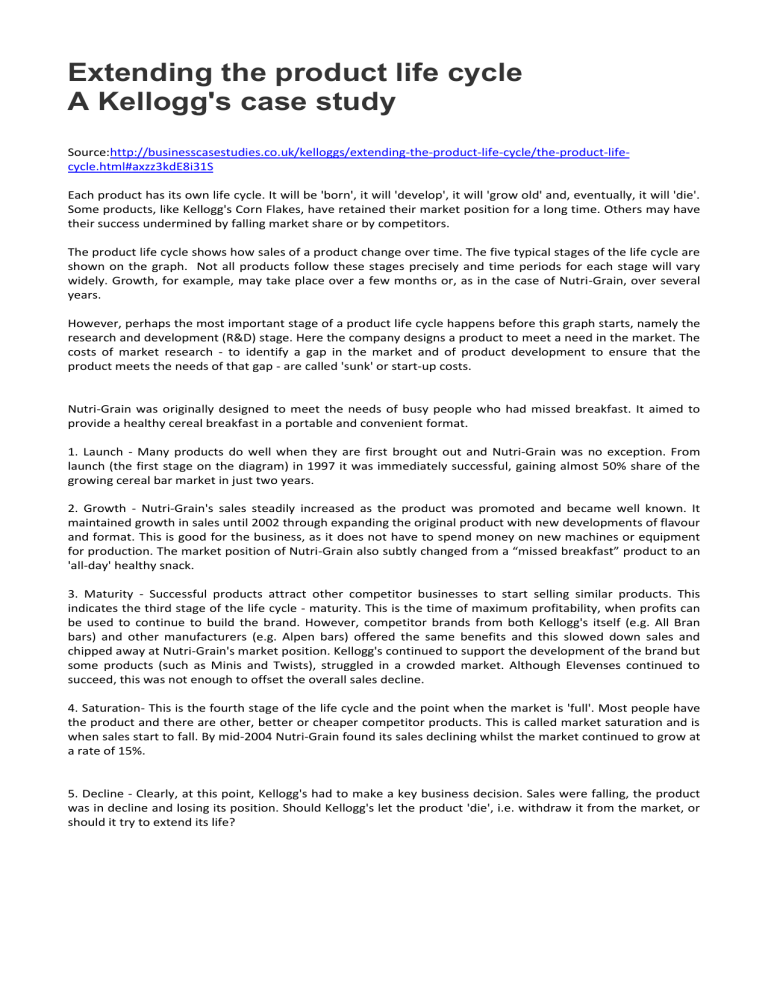
Related documents
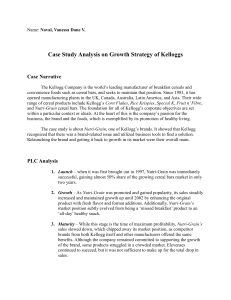
Add this document to collection(s)
You can add this document to your study collection(s)
Add this document to saved
You can add this document to your saved list
Suggest us how to improve StudyLib
(For complaints, use another form )
Input it if you want to receive answer
- Directory Global directory
- Logins Product logins
- Support Support & training
- Contact Contact us

Talent Insights
Based on empirical research with more than 2,400 stand-out lawyers around the world, firms can now examine what action needs to be taken to nurture, retain and attract top talent.
Featured event
Jan 23, 2023
The 30th Annual Marketing Partner Forum
Related posts.

How to integrate ESG risks into the enterprise’s overall risk management

Why ESG is so important when choosing a project’s location in Latin America

Erosion in the rule of law creates potential corporate governance gaps & increases risks for management
More insights.

Asking the right questions for AI-enabled regtech design

New tech & regulations changing the face of legal due diligence, new paper shows

Practice Innovations: Pro Bono legal work — Easy as pie, bite-size ways to increase participation
The Brand Hopper
All Brand Stories At One Place
Case Study | Launching Kellogg’s Cornflakes in India
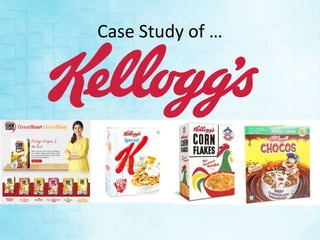
Case Study | Launching Kellogg’s Cornflakes in India 10 min read
“ Mothers know what they want and when; we can’t push our offering to them without giving them a reason they value, ” the Head of Marketing at Kellogg’s India clarified. The Kellogg’s cornflakes marketing team was struggling to find an appropriate positioning platform for the brand to increase sales and ensure brand growth. The brand was globally accepted but its journey in India has been bumpy. They had struggled to find a suitable place in consumer’s heart and mind, and again they were rethinking the growth strategy. Let’s delve into the classic case study of Kellogg’s launch in India and the valuable lessons it departs.
Table of Contents
Breakfast Market in India
The breakfast cereal market in India was pegged at Rs. 12 billion in 2014, an almost 15% growth from Rs. 10.4 billion in 2013, and was expected to grow at a CAGR of 13% over the five-year period. Due to increased health consciousness among consumers, hot cereals and muesli were the fastest growing product categories. Among hot cereals, oats had gained the highest popularity registering a 33% growth in 2014.
Cereal was not a popular breakfast item for Indians, and hence, the market was dominated by international brands from Kellogg’s and Pepsico. Bagry’s India Ltd and Mohan Meakin were the only two Indian players in the market. Kellogg’s India Ltd had the first-mover advantage and was the undisputed market leader with 37% value share in 2014.2 Regional players had a competitive edge over bigger brands because of their robust distribution network. Competition also stemmed from other FMCG chains that did not necessarily have packaged breakfast as their core product offering, for example, ready-to-eat players like MTR and Britannia with its range of ready-to-cook upma, porridge, and poha. These products provided consumers with healthy options that were not just quick but also healthy.
Consumer Behavior Towards Breakfast
India did not have the culture of breakfast. A typical, average middle-class Indian family did not have breakfast on a regular basis like their western counterparts. Breakfast was always combined with lunch—“Brunch” as it was popularly called. Breakfast habits (brunch) in India, for the most part, were inclined towards hot, cooked regional items, like flattened rice flakes (chivda/poha) in western and central India, whole wheat grits (dalia) and parathas in northern India along with traditional regional staples such as idli or dosa in the south. In the earlier days, women prepared fresh breakfast for the family. Serving ready-to-eat meals were not part of the cultural norm and such options were also not widely available.
However with urbanization, dual-working households, and lifestyle changes, there was a greater need for convenience. This was also coupled with increasing disposable income and health consciousness. Increasing awareness of health and susceptibility of Indians towards lifestyle ailments like heart disease and diabetes yielded a greater demand for value-added healthy breakfast options.
Hence, consumers, especially in urban areas, preferred a quick-fix breakfast and cereals would fit the bill. The influence of Western lifestyles and “eating out” trends also played a significant role in opening the gateway for experimenting with different tastes and varying eating preferences. This transition from traditional to modern breakfast took place among young Indians (24–35 years), mostly from dual income families. Choice of breakfast options was induced by personal factors like time constraint, work timings, social groups, and family members.
Kellogg’s Entry in India
In the late 1980s, ready-to-eat cereal giant and market leader, Kellogg’s had reached peak sales occupying a 40% market share in the US. The company had its presence in 18 countries and over 20 plants worldwide with annual sales of over $ 6 billion. However, in the 1990s, competition got tougher and Kellogg’s began to struggle when its nearest rival when General Mills introduced Cheerios brand. There was little room for growth in core markets; therefore, the company started looking beyond its traditional American and European countries as a potential cereal-consuming market.
India was a lucrative target market with population of over 950 million, out of which 250 million were middle class and untapped. In 1991, India went through an economic liberalization and removed the barriers to international trade. Three years later, Kellogg’s decided to invest $ 65 million towards launching its number one brand, Corn Flakes, in India. “ Even if Kellogg’s had 2% market share at 18 million consumers they would have a larger market than US itself , ” said Bhagirat B Merchant, Director of Bombay Stock Exchange in 1994.
Positioning at Launch
Globally, Kellogg’s cornflakes were positioned on the “fun and taste” platform, and they emphasized on the crispiness of its flakes. When Kellogg’s entered the Indian market in 1994, it positioned itself to families/households on the health platform, thus emphasizing on the nutritional benefits of the cereal. They tried to communicate to consumers that traditional Indian breakfast options were not as healthy, and hence, cornflakes were a good choice. This was done based on the insight that Indians consumers were not habituated to cereals as a breakfast item and needed to be educated to create acceptance and liking for not just the brand but cereal as a category.
Kellogg’s kicked off its India entry with three variants of breakfast cereal: Corn Flakes, Wheat Flakes, and Rice Flakes, packaged with an emphasis on the crispiness of its flakes compared to local cereals. These cereals were best served with cold milk without adding sugar. The tagline to reinforce the positioning was- “ Jaago jaise bhi, lo Kellogg’s hi ” (“No matter how you start your day, start it with Kellogg’s”). However, the proposition did not find much credibility with households. Average Indian did not pay much importance to iron/vitamin intake.10 The nutritional benefit was not a differentiated and strong enough proposition for Indians to change their habits and move away from traditional items as they considered their food to be equally or more nutritious.
The initial sales were impressive but Kellogg’s knew that this was a result of one-off purchases. Cereals were a new item for the Indian consumer and after the initial excitement wore off, repeat purchases were few. Another barrier to repeat purchase was the high price. A 500 grams box of corn flakes was almost 30% costlier than its nearest competitor. Indians did not find value in spending so much for an expensive breakfast and often the leftovers from the previous day were cooked or served differently for breakfast next day. In certain households, corn flakes were reserved as a Sunday or special occasions treat.
Also, the emphasis on crispy flakes failed in India as consumers were used to hot milk which made cornflakes soggy. This further diluted the Kellogg’s brand promise. On the heels of continuous unimpressive sales, Kellogg’s realized that their breakfast option was diametrically opposite to what generations of Indians have been eating. The typical Indian breakfast was still hot, home-made, heavy-as-a-meal, and savory rather than sweet. What Kellogg’s was offering was ready-to-eat, best served with cold milk, and bland unless you add a sweetener.
In early 1996, defending the company’s products, Managing Director, Avronsart said, “ Kellogg’s India is not here to change breakfast eating habits. What the company proposes is to offer consumers around the world a healthy, nutritious, convenient, and easy-to-prepare alternative in the breakfast eating habit. It was not just a question of providing a better alternative to traditional breakfast eating habits but also developing a taste for grain-based foods in the morning ”.
Indian consumers did not perceive the Kellogg’s differentiators relevant. They were not looking for thicker and crispier flakes with iron and vitamin. They sought basic health and taste which their traditional food and other competitor brands were also fulfilling.
Repositioning and Product Extensions
Kellogg’s saw that Indian households were difficult to target and moved their focus to kids with the launch of two of its highly successful international brands, Chocos in September 1996 and Frosties in April 1997. Chocos were wheat scoops coated with chocolate, while Frosties had sugar frosting on individual flakes. Frosties addressed the shortcomings of plain cereals because they were ready sweetened which sweeten the milk when it is added to the bowl. Both these variants were not positioned as breakfast items but as snack items on the proposition of fun and taste combined with health. Now the mother was urged to give Chocos as a mid-meal snack to fulfil nutrition requirement.
These variants found feet in the market and targeting kids helped. However, in 1998, Kellogg’s again tried targeting families and households by “Indianizing” its cereal range with the “Mazza” brand. Mazza cereals were available in fusion of local flavours like mango-elaichi, coconut-kesar and rose. The variant did not work. Mazza was more to do with the taste of the product and many consumers thought these were too outlandish.
In 1999, Kellogg’s began offering fortified cereals. The “Iron Shakti” cornflakes positioned on the nutrient value of cornflakes and addressed iron deficiency in children. The nutrition platform was more focused and relevant here as no other brand or product spoke of iron supplement. This became the differentiator and sales increased by 17%. Making the brand and proposition sound Indian by using words like “Iron Shakti” and “Calcium Shakti” gave it a local feel. This approach was more successful than the brand’s previous attempt to imply that the traditional Indian breakfast was not nutritious—messaging which made the Indian housewife rather indignant. The proposition this time was a nutritious and fun breakfast for kids coupled with goodness of iron (which mothers worry about).
Besides positioning, Kellogg’s also changed the communication. It removed the rooster which had an integral association with Kellogg’s globally from all its advertisements in India. The promotions focused on inducing product trial by targeting schools across the country. In March 1996, the company gave out specially designed 50 gm packs to shoppers at select retail stores, and door-to-door sampling exercise offering one-serve sachets to housewives in the city.
However, the company knew that very few Indians had breakfast and they could grow only by growing the category. In 1997, they launched the “Kellogg Breakfast Week” in Mumbai, Delhi, and Chennai, a community-oriented initiative to create and increase awareness. The campaign focused on making people aware about the prevention of anemia, an iron deficiency disorder, and conducted a series of nutrition workshops to educate individuals and families.
As the brand had sub-segmented the market and offered specific customized variants to each with the relevant proposition, its agency, JWT, wanted to identify the triggers that enabled customers to move towards this category. Their research suggested that though Kellogg’s was positioned to kids, they were consumed by the entire family. They also found that healthy afternoon snacking was a large consumer need. Lastly, women in India were becoming more health conscious and desperately wanted to get into shape.
Using these insights, Kellogg’s launched Kellogg’s multi-grain, fortified cornflakes targeted to adult taste buds. Advertisements also began showing adults eating the cereal, rather than focusing on children alone. The assault on the afternoon-snack segment was led by Chocos. This brand was already popular with children, who were their key consumers for “4 pm munches”. The launch communication offered the Chocos variant as a nutritious substitute for chips and other junk food.
Special K: Get into Shape
In 2008, Kellogg’s launched their $1.5 billion “Special K” brand as a weight management cereal targeted at women (25–44 years) who wanted to keep in shape. It was positioned as a low-calorie weight control meal. This was again not categorized as breakfast item but a complete meal. Consultants pointed out that Kellogg’s’ brand extension strategy helped to increase its relevance across categories. It was a player in the Rs 500-crore weight management market and the Rs 750- crore convenience foods market, apart from the Rs 250-crore breakfast cereal market (which, in turn, was part of the Rs 2,000-crore health foods segment).
The marketing team knew that as against other markets, Kellogg’s not only adapted its portfolio to match Indian needs but also made changes to their global positioning to appeal to Indian consumers. Indian market is diverse and unique, and expects the offerings to fit their life pattern. The marketing head at Kellogg’s had recently read an article that incorrect positioning was the reason behind 80% brand failures. Kellogg’s have been relooking at their 5-year strategy as they have always wanted to be confident on the delivering the promise they have made to its consumers.
Also Read: Case Study | Launching And Establishing Oreo in India
To read more content like this, subscribe to our newsletter

Leave a Reply Cancel reply
Your email address will not be published. Required fields are marked *
Save my name, email, and website in this browser for the next time I comment.
Related Posts

A Case Study on “Fitbit: Find Your Reason” Marketing Campaign
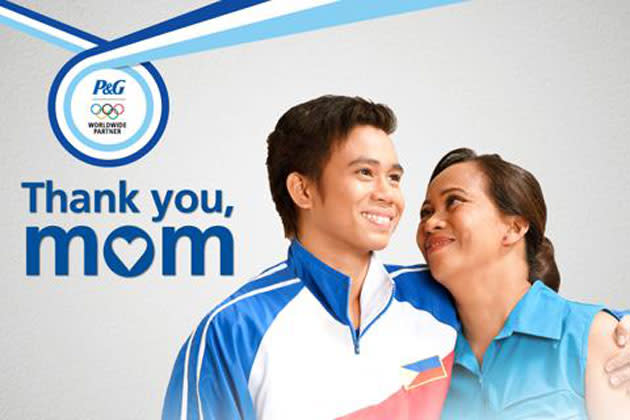
A Case Study on “P&G: Thank You, Mom” Brand Campaign
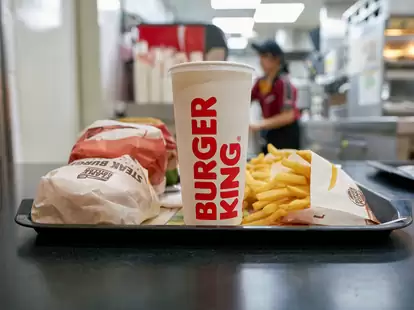
Case Study – Burger King: Subservient Chicken Brand Campaign
Terms and Conditions

IMAGES
VIDEO
COMMENTS
In this program, you learn a cradle-to-grave approach for managing and optimizing the life of a product or service. You will be equipped to think like the CEO of your product or service, all in a flexible, online format. Throughout the program's eight weeks, you will have the opportunity to engage in interactive, thoughtful discussions with ...
According to a study by IRI Worldwide in 2017, Kellogg's had a share of 30.01% in the US breakfast cereals market. This was because the company produced 4 out of the 10 favorite bowls of cereal: ... and new product development, the company spends surprisingly little: 2020-$135; 2019-$144; 2018-$154. ... All Case Studies. Webinars. Get ...
A Kellogg's case study Introduction The Kellogg Company is the world's leading producer of cereals. Its products are manufactured ... Kellogg's used market research throughout the whole development process for a new product for the Crunchy Nut range, from the initial idea to the planning of production and delivery.
Case 1 Kelloggs - Using New Product Development to Grow a Brand - Free download as Word Doc (.doc / .docx), PDF File (.pdf), Text File (.txt) or read online for free. Using New Product Development to Grow a Brand
Refer to the case study (Kellog's_Extending the product life cycle) to answer the following questions: (40 points) a) Using current products familiar to you. draw and label a product life cycle diagram. showing which stage each product is at. b) Suggest appropriate aims and objectives for a small. medium and large business.
Learn about Kelloggs with real-life examples within their case studies constructed around the key elements of the business curriculum. Business Case Studies. 8.4 C ... Using new product development to grow a brand. Kellogg's and the marketing mix With annual sales of more than £4.5 billion, Kellogg's is the world's leading producer of ...
BATTLE CREEK, MICH. — Forthcoming product launches from Kellogg Co. focus on three key areas, said Nigel Hughes, senior vice president of global research and development. The first area of innovation taps into consumer desire for simple enjoyment and includes products such as Pringles Scorchin', Homestyle Rice Krispies Treats, Eggo Stuffed Pancake Bites and the return of Smorz cereal.
4. Special K - cereal Initial developments came from Kellogg's in France, who introduced red berries into the cereal. This new product performed well. Market research in the UK, including consumer tests, also identified a real opportunity within the UK market. In October 1999, Kellogg's launched Special K Red Berries in the UK.
Learning outcomes. After having discussed the case, the reader will be able to analyse the dangers associated with product changes; contrast various strategic marketing issues that can be considered when implementing changes, including marketing communication and the use of social media; motivate an approach to customer complaints and comments on the launch of a new product; and comment on the ...
Link business strategy to product development, product roadmaps and types of roadmaps, roadmapping tools, and product portfolio management. ... real-world examples, case study scenarios, and downloadable content. You will put your learning into action through weekly activities, customized assignments and quizzes, discussion boards and faculty ...
Marketing management,School of Management Studies , Cusat , Kochi. Business. 1 of 4. Download Now. Download to read offline. Kellogs - Extending the product life cycle - case study. Kellogs - Extending the product life cycle - case study - Download as a PDF or view online for free.
2. Kellogg's and the marketing mix. With annual sales of more than £4.5 billion, Kellogg's is the world's leading producer of cereal products and convenience foods, such as cookies, crackers and frozen waffles. Its brands include Corn Flakes, Nutri-Grain and Rice Krispies. Kellogg's is a global organisation.
Abstract. Learning outcomes After having discussed the case, the reader will be able to analyse the dangers associated with product changes; contrast various strategic marketing issues that can be ...
Kellogg Company (also known as Kellogg's) is a multinational food manufacturing company headquartered in Battle Creek, Michigan. The company's brands include Froot Loops, Corn Flakes, Rice Krispies, Special K, Pringles, Pop-Tarts, Nutri-Grain, and Morningstar Farms. Kellogg products are manufactured in 18 countries and marketed in over 180 ...
11. In a market where companies are often operating with a Product Oriented approach KELLOGG's adopts a Market Oriented approach. It is therefore essential that it identifies and anticipates changing consumer needs before the development of new products. Market research adds value to businesses like Kellogg's by identifying consumers' needs. It helps Kellogg's to plan ahead It focuses ...
Dr. Bhowmick MKTG333- 8 September 2019 Kellogg's Case Study. Given what you know about the cereal industry and the information provided above, choose one of the products or product lines marketed by Kellogg (it can be an older brand or a new release) and try to write out its PIC for 1999, around the time of Gutierrez's assumption of the CEO position.
Kellogg's is the world's largest cereal maker since 1906 and is located in the United States. Kellogg's products has become a part of the delicious mornings for the people around the world since a century. Its business is operated in two segments: Kellogg's North America and Kellogg's International. 66% of the revenue to the company ...
Sales were falling, the product was in decline and losing its position. Should Kellogg's let the product 'die', i.e. withdraw it from the market, or should it try to extend its life? Extending the Nutri-Grain cycle - identifying the problem The choice of extension strategy indicated by the matrix was either product development or diversification.
Kellogg's has seen positive implications by intentionally collaborating with stakeholders to integrate the organization's corporate purpose and social impact into its ESG strategy in a variety of ways, including: Cross-stakeholder ESG initiatives — Honoring World Food Day is a month-long event at Kellogg's. It is an opportunity for the ...
This case study focuses on the importance of market research during the development and launch of Crunchy Nut Bites, a more recent extension to the Crunchy Nut brand. The objective of this innovation was to provide a new flavour and texture for consumers, helping Kellogg's extend its share of the breakfast cereals market. Curriculum Topics
Kellogg's Entry in India. In the late 1980s, ready-to-eat cereal giant and market leader, Kellogg's had reached peak sales occupying a 40% market share in the US. The company had its presence in 18 countries and over 20 plants worldwide with annual sales of over $ 6 billion. However, in the 1990s, competition got tougher and Kellogg's ...
Its brands include Corn Flakes, Nutri-Grain and. SECTION A [40 MARKS] Read the case study below and answer ALL questions that follow. Kellogg's new-product development to grow a brand With annual sales of more than £4.5 billion, Kellogg's is the world's leading producer of cereal products and convenience foods, such as cookies, crackers ...